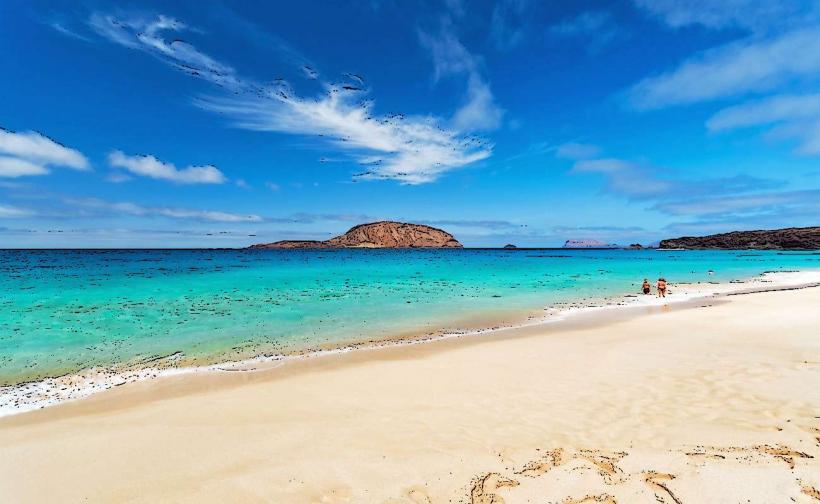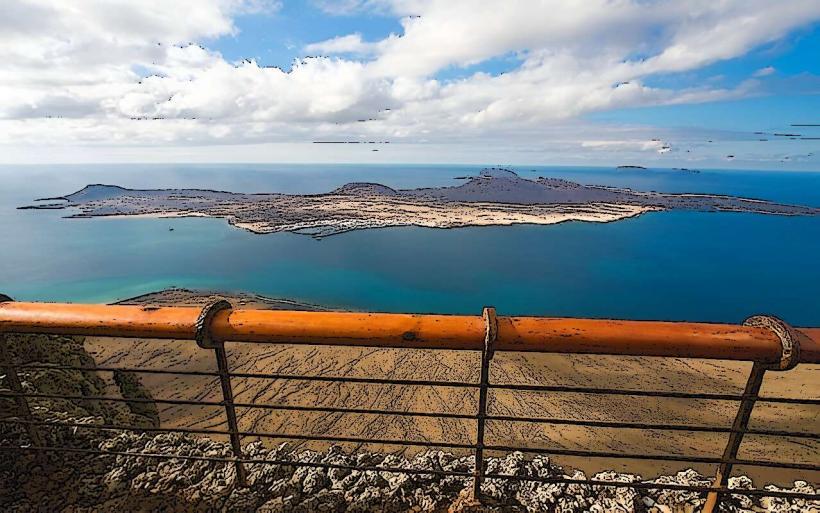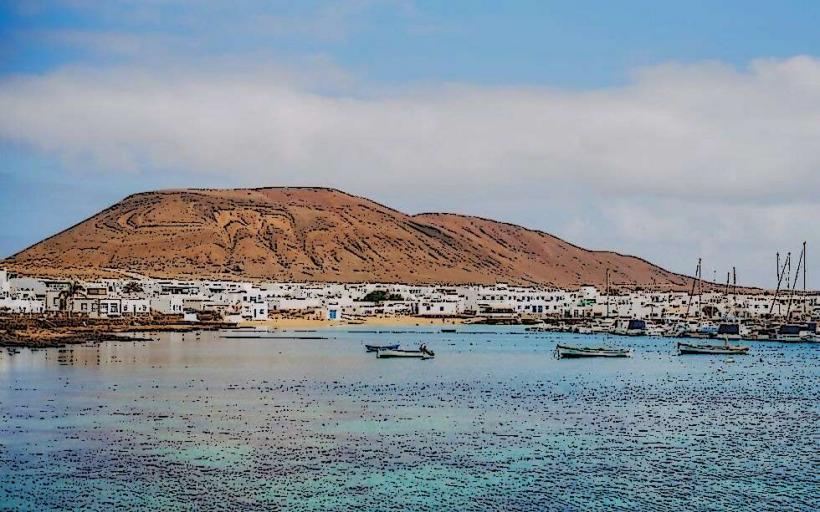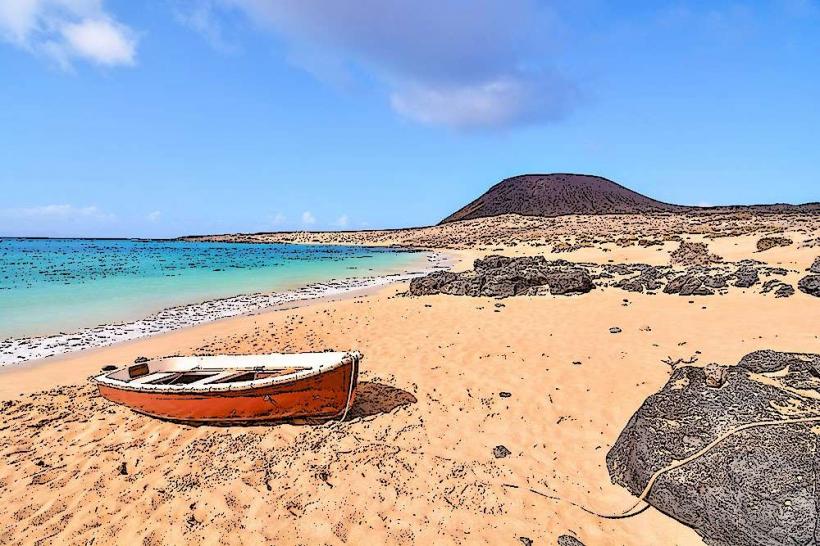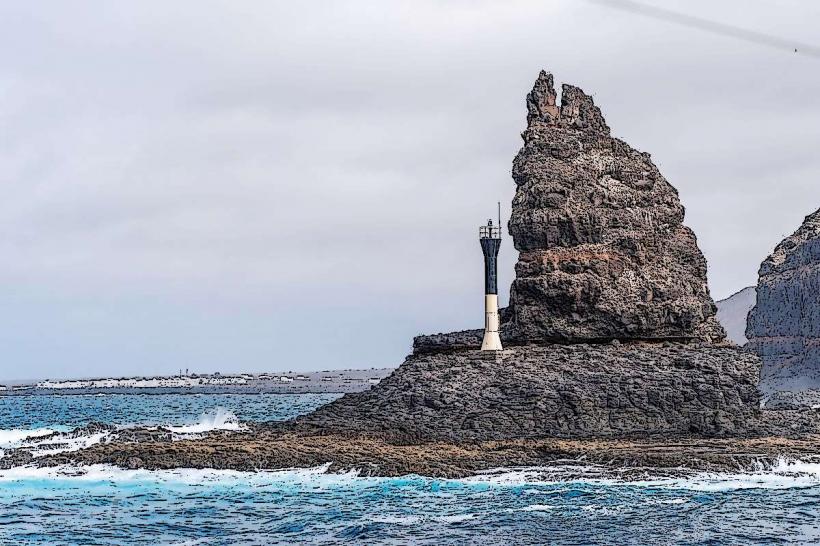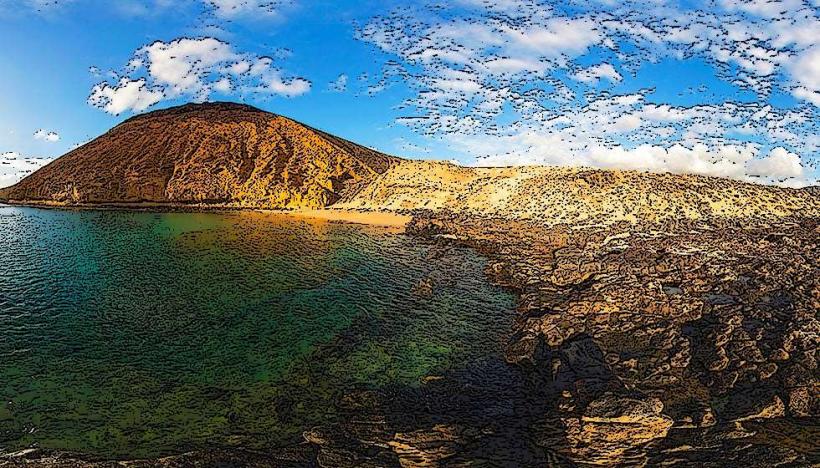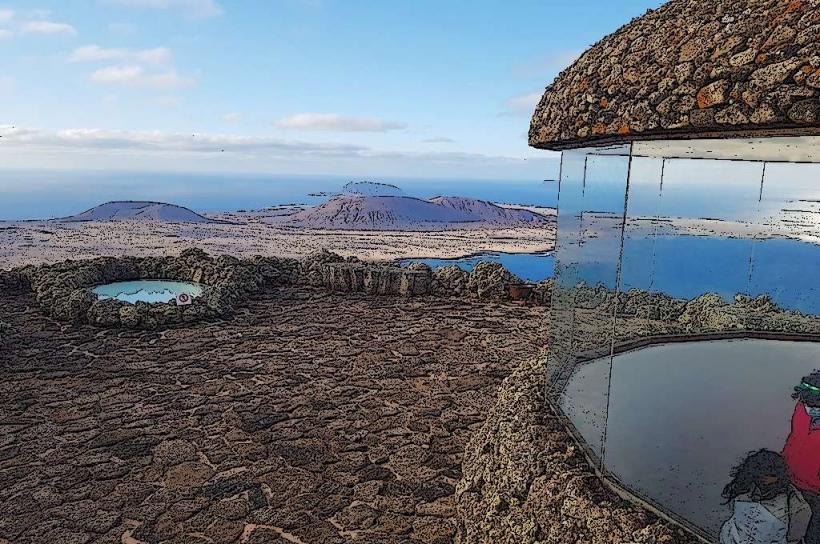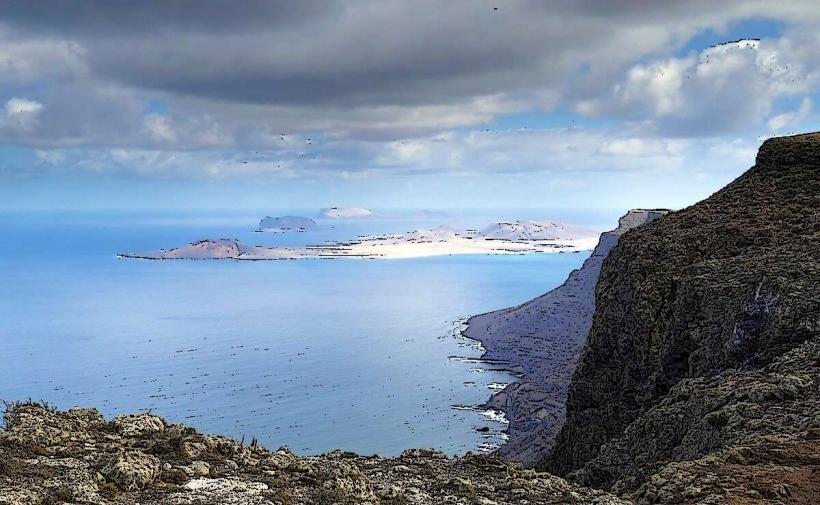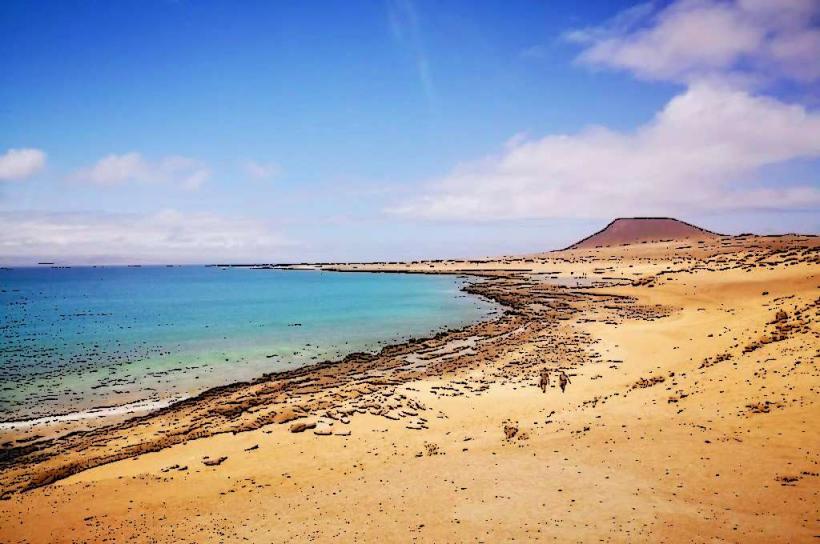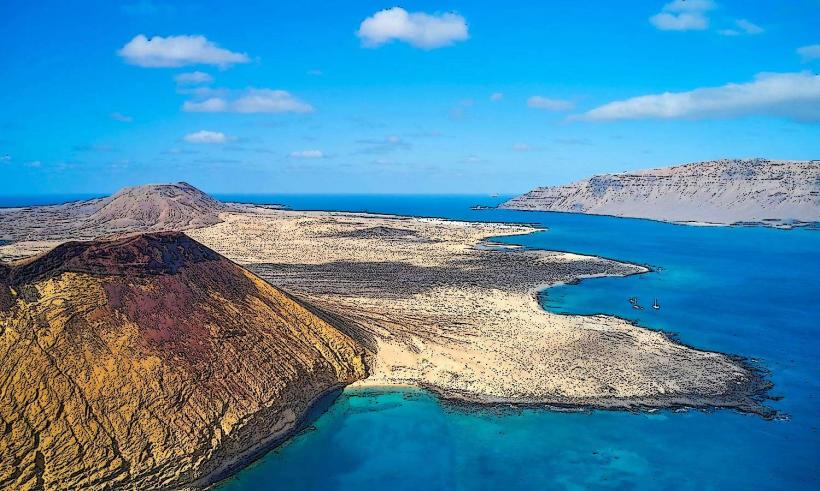Information
Landmark: Montaña ClaraCity: La Graciosa
Country: Canary Islands
Continent: Europe
Montaña Clara is a small, uninhabited volcanic island located in the Chinijo Archipelago, which is part of the Canary Islands. It lies to the northeast of La Graciosa, the largest island in the archipelago, and is one of the more remote islands in the area. Known for its striking landscape and rich biodiversity, Montaña Clara is a protected nature reserve, with limited human access to preserve its pristine environment.
Key Features of Montaña Clara
1. Geography and Landscape
- Size and Location: Montaña Clara is a relatively small island, measuring about 4 kilometers (2.5 miles) in length and 2 kilometers (1.2 miles) in width. It is located approximately 5 kilometers (3 miles) north of La Graciosa, the nearest inhabited island.
- Volcanic Origin: Like many of the islands in the Canary Islands archipelago, Montaña Clara is of volcanic origin. The island features steep cliffs, rocky outcrops, and rugged terrain. The highest point on the island is Montaña Clara, which stands at around 266 meters (873 feet) above sea level, giving the island its name.
- Lava Formations: The island is characterized by dark basaltic lava flows, volcanic craters, and other geological features typical of the Canary Islands’ volcanic landscape.
2. Natural Reserve
- Protected Area: Montaña Clara, along with other islands in the Chinijo Archipelago, is part of the Chinijo Archipelago Natural Park, which was established to protect the unique wildlife and natural environment of the region. The area is considered one of the most important marine and terrestrial reserves in the Canary Islands.
- Limited Human Access: Due to its status as a nature reserve, Montaña Clara is closed to the public for most of the year. The island is protected to prevent human activities that might disturb its delicate ecosystems. Visitors can sometimes access the island with special permits, but access is generally restricted to researchers, conservationists, and guided tours focused on environmental education.
3. Flora and Fauna
- Rich Biodiversity: Montaña Clara is home to a wide range of native species of plants, birds, and marine life. The island’s isolated nature and limited human interference have allowed various species to thrive here, many of which are endemic to the Canary Islands.
- Birdlife: The island is an important habitat for seabirds, including species like the Canary Islands stonechat and Cory’s shearwater, which nest on the cliffs and rocky areas. The island also hosts other bird species, making it a haven for birdwatchers.
- Marine Life: Surrounding waters are home to rich marine biodiversity, with clear waters ideal for diving and snorkeling. The marine life includes a variety of fish species, invertebrates, and occasionally, dolphins and sea turtles.
4. Marine and Coastal Features
- Clear Waters: Montaña Clara is surrounded by crystal-clear waters, making the island popular with divers and snorkelers when accessible. The waters are teeming with marine life, offering opportunities to explore vibrant underwater ecosystems.
- Islet Roque del Este: Close to Montaña Clara is Roque del Este, a small islet that is also part of the protected area. This rock formation is an important landmark in the area and adds to the island’s rugged coastal beauty.
5. Historical and Cultural Significance
- Historical Importance: Montaña Clara, along with the other islands in the Chinijo Archipelago, has historically been used by fishermen and sailors as a stopping point for navigation and as a resource for seafood. However, it has remained largely untouched by large-scale human development.
- Name Origins: The island’s name, “Montaña Clara,” meaning "Clear Mountain" in Spanish, is thought to refer to the island’s visibility from afar due to its elevated position and the clarity of the waters surrounding it.
6. Visiting Montaña Clara
- Boat Tours: While public access is limited, visitors can view Montaña Clara and its dramatic landscape from boat tours that operate around the Chinijo Archipelago. These tours allow people to enjoy the island’s volcanic features, crystal-clear waters, and abundant wildlife from a distance.
- Ecotourism: As a protected natural area, Montaña Clara is often included in ecotourism programs and conservation-focused initiatives. For those who are allowed to visit, the focus is usually on environmental education and sustainable tourism practices.
7. Why Visit Montaña Clara?
- Pristine Nature: For those lucky enough to gain access, Montaña Clara offers an incredible opportunity to experience a pristine, untouched natural environment. The island’s volcanic landscapes, clear waters, and rich biodiversity make it a unique and special destination.
- Biodiversity and Birdwatching: Montaña Clara is an important site for nature lovers, particularly birdwatchers and wildlife enthusiasts, due to its varied bird species and diverse ecosystems.
- Marine Life Exploration: For divers and snorkelers, the surrounding waters offer an opportunity to explore some of the Canary Islands’ most vibrant marine ecosystems, teeming with fish, corals, and other marine species.
Conclusion
Montaña Clara, with its rugged volcanic terrain, rich biodiversity, and protected status, is one of the most fascinating and remote destinations in the Canary Islands. Its natural beauty, the variety of wildlife it supports, and its place within the Chinijo Archipelago Natural Park make it a valuable ecological treasure. While access is limited, the island remains an important site for conservation and ecotourism, offering a rare glimpse into one of the Canary Islands' most untouched natural landscapes.

